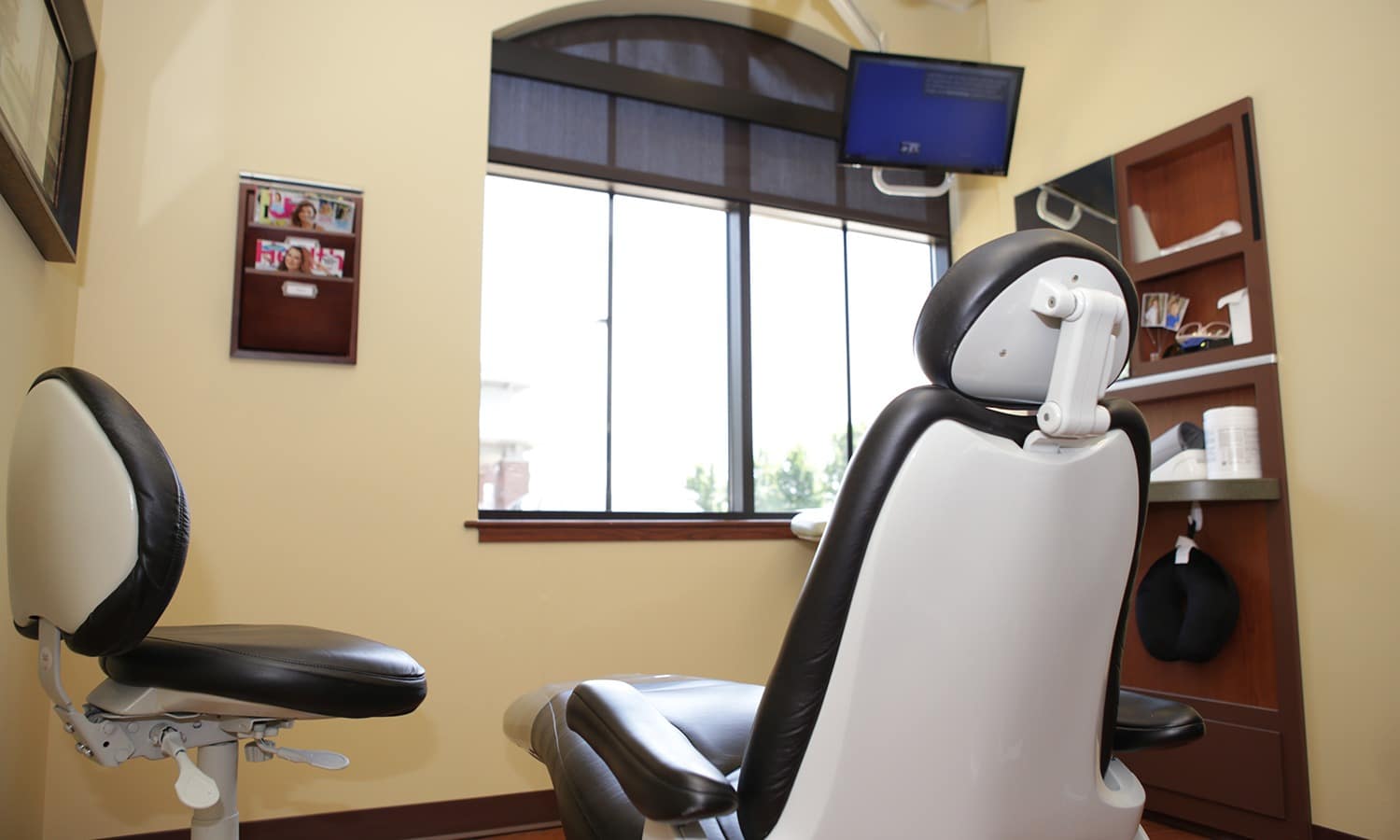Dental Fillings In Grandville, MI
A dental filling, also known as a dental restoration, is a common procedure that a majority of people will experience their lives.
If it’s your first time, or it’s been a while since you last had a filling done, you might be surprised at the options that are available.
Call Dr. Doug Klein and the friendly dental team at his dentist office in Grandville, MI to learn about our high-tech services and request a reservation for your next filling today, before it gets any worse!

What Is A Tooth Filling?
Tooth decay, also called a cavity, is structural damage to a tooth caused by acidic breakdown.
Bacteria, diet, and hygiene play a significant role in the the development of tooth decay.
Removing the damaged portion of the tooth decay prevents further damage, and “filling” the damaged portion back in restores the tooth back to form, function, and esthetics.
How Do I Know If I Need A Filling?
Dr. Klein will visually and manually inspect your teeth, using a bright lighting, a small mirror, and an instrument called a dental explorer. He may also take radiographs (X-rays) of your teeth in order to find cavities that may develop between your teeth.
Get affordable, professional dental care even if you don’t have other dental benefits!
If you don’t have dental benefits, you may tend to skip regular dental visits because of the cost. But Klein Dentistry can help!
Join our dental care membership club and you’ll get 2 cleanings per year, x-rays and exams included! Members also receive 12% off other services.
Great for kids and adults, our club has many perks that will keep your mouth healthier and your smile brighter all year long.
You can even join our club if you have periodontal disease.
What Types Of Tooth Fillings Are Available?
At Klein Dentistry, we offer several types of fillings including amalgam (silver), composite resin (plastic), ceramic (porcelain), and gold. Dr. Klein works with each patient to identify the kind of filling and process that is best and least invasive – maximizing comfort, effectiveness, and esthetics.
Composite Resin
These plastic fillings are also placed directly into the tooth and have a more natural appearance which can be matched to the same color as your teeth, making them suitable for use in front teeth and those that are visible.
Composite fillings actually chemically bond to tooth structure, providing further support. This can allow more conservative preparation of the tooth before filling.
Improvements in composite resin technology and techniques have allowed this material to rival the durability of dental amalgam.
Porcelain Fillings
(called inlays or onlays) are fabricated outside of your mouth by an expert technician using a model of the prepared tooth, and therefore require more than one visit to complete. Porcelain restorations are some of the most durable and beautiful materials available.
Due to the more labor intensive process of making and fitting these restorations, they are are more expensive than direct resin or amalgam fillings. In return for the increased investment, it is generally expected that porcelain restorations will significantly out-last direct fillings.
Amalgam (Silver)
Amalgam fillings are placed directly into the tooth and shaped before the chemical process that hardens them is complete. They are the least expensive type of filling and can be resistant to wear, and long- lasting. However, due to their dark unnatural color, they are more noticeable than other restorations and aren’t usually used in very visible areas, like the front teeth.
The amalgam filling merely fills the hole in the tooth, with no chemical bond to the tooth structure. When amalgam fillings are large or deep they can actually contribute to weakening of the tooth structure, leading to fracture.
Gold
Gold fillings (called inlays or onlays) are fabricated outside of your mouth by an expert technician using a model of the prepared tooth, and therefore require more than one visit to complete. Due to the high cost of gold and the labor-intensive process of making and fitting these restorations, they are more expensive than direct resin or amalgam fillings.
In return for the increased investment, it is generally expected that porcelain restorations will significantly out-last direct fillings. In return for the increased investment, it is generally expected that porcelain restorations will significantly out-last direct fillings. Because they are made of a metal, there is no risk of chipping or fracture, but the unnatural appearance of gold is a deterrent for some patients.
What To Expect With A Filling
When it comes to getting your filling, it’s a relatively routine procedure, and Dr. Klein works with each patient to ensure maximum comfort and ease.
You should expect to be at the Klein Dentistry office for 30 – 60 minutes depending on the size, location and material choice.
Before beginning, Dr. Klein will numb your teeth, gums, and surrounding tissue to ensure your comfort during the procedure.
Next, he will remove all the decay and shape the tooth as needed for the restorative material.
If a direct filling is being used, the tooth will be carefully cleaned and restored. Once your restoration has been shaped to fit seamlessly into your bite, the restoration is finished and polished.
If an indirect restoration is being fabricated, the tooth is thoroughly cleaned and an impression (or mold) of your tooth is made. After the impression, a temporary filling is placed. It usually takes 2-3 weeks to have a ceramic or gold restoration fabricated.

Temporary to Permanent Filling
At the try-in appointment, the temporary filling is removed and the tooth is cleaned again. Once the fit of the new ceramic or gold filling has been verified, it is cemented into place using a high-strength, chemically bonded dental cement. Once the restoration has been fit seamlessly into your bite, it is finished and polished.
The Klein Dentistry
Difference
The difference is careful, intricate planning for the individual needs of each patient.
Our teams work hard to build trust, and each patient is presented with every option available, along with the pros and cons of each. We take our time to be sure that everything is clearly explained so patients can make the best decision for them.



